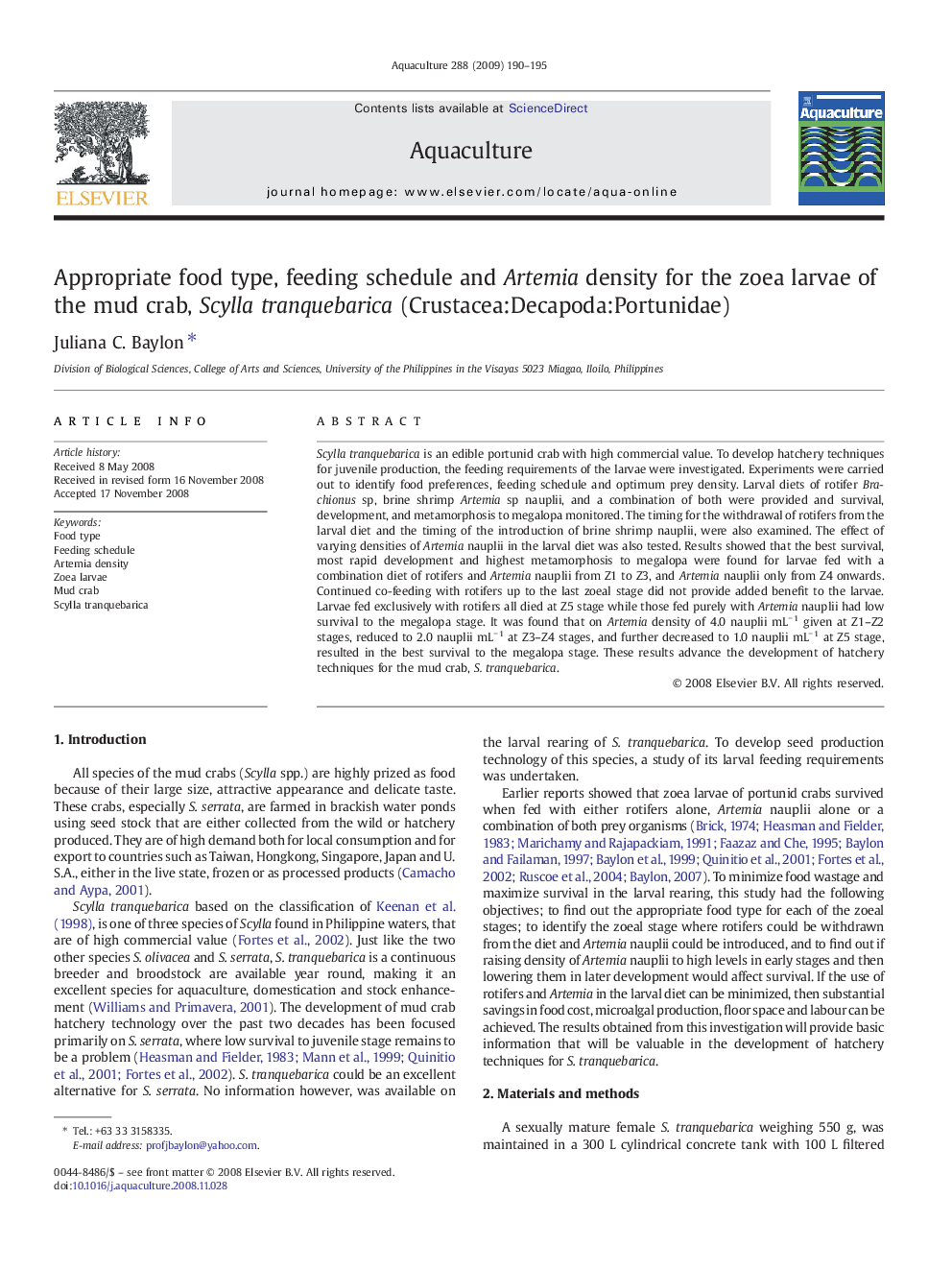| Article ID | Journal | Published Year | Pages | File Type |
|---|---|---|---|---|
| 8496148 | Aquaculture | 2009 | 6 Pages |
Abstract
Scylla tranquebarica is an edible portunid crab with high commercial value. To develop hatchery techniques for juvenile production, the feeding requirements of the larvae were investigated. Experiments were carried out to identify food preferences, feeding schedule and optimum prey density. Larval diets of rotifer Brachionus sp, brine shrimp Artemia sp nauplii, and a combination of both were provided and survival, development, and metamorphosis to megalopa monitored. The timing for the withdrawal of rotifers from the larval diet and the timing of the introduction of brine shrimp nauplii, were also examined. The effect of varying densities of Artemia nauplii in the larval diet was also tested. Results showed that the best survival, most rapid development and highest metamorphosis to megalopa were found for larvae fed with a combination diet of rotifers and Artemia nauplii from Z1 to Z3, and Artemia nauplii only from Z4 onwards. Continued co-feeding with rotifers up to the last zoeal stage did not provide added benefit to the larvae. Larvae fed exclusively with rotifers all died at Z5 stage while those fed purely with Artemia nauplii had low survival to the megalopa stage. It was found that on Artemia density of 4.0 nauplii mLâ 1 given at Z1-Z2 stages, reduced to 2.0 nauplii mLâ 1 at Z3-Z4 stages, and further decreased to 1.0 nauplii mLâ 1 at Z5 stage, resulted in the best survival to the megalopa stage. These results advance the development of hatchery techniques for the mud crab, S. tranquebarica.
Keywords
Related Topics
Life Sciences
Agricultural and Biological Sciences
Aquatic Science
Authors
Juliana C. Baylon,
